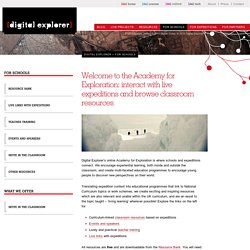

Design for Change. DESIGN FOR CHANGE is the largest global movement designed to give children an opportunity to express their own ideas for a better world and put them into action.

Children and adults learn through the Design for Change Challenge that “I Can” are the two most powerful words a person can believe. Children who have discovered this are changing their world. This year, Design for Change reaches 34 countries and over 300,000 schools inspiring hundreds of thousands of children, their teachers and parents, to celebrate the fact change is possible and that they can lead that change! The challenge asks students to do four very simple things: Feel, Imagine, Do and Share. Children are dreaming up and leading brilliant ideas all over the world, from challenging age-old superstitions in rural communities, to earning their own money to finance school computers to solving the problem of heavy school bags – children are proving that they have what it takes to be able to ‘design’ a future that is desired.
FECYT_Ciencia (@FECYT_Ciencia) Órbita Laika - Programa 11, Órbita Laika. Las catedrales como laboratorios de física experimental. La estructura de los edificios dedicados al culto cristiano supuso una oportunidad para los primeros científicos modernos para realizar toda clase de experimentos astronómicos y físicos.

Algunos de los cuales afianzaron ideas contrarias a las enseñanzas de los propios dueños de los edificios. Veamos algunos ejemplos, sin ánimo de ser exhaustivos. El espacio que existe entre la linterna de la cúpula de una iglesia y el pavimento, protegido del viento, constituyó una de los mejores escenarios imaginables a principios de la Edad Moderna para realizar experimentos de caída libre bajo los efectos de la gravedad. Untitled. Www.robives.com. Kiva - Préstamos que cambian vidas. For Schools « Digital Explorer. Digital Explorer’s online Academy for Exploration is where schools and expeditions connect.

We encourage experiential learning, both inside and outside the classroom, and create multi-faceted education programmes to encourage young people to discover new perspectives on their world. Translating expedition content into educational programmes that link to National Curriculum topics or work schemes, we create exciting and inspiring resources which are also relevant and usable within the UK curriculum, and are an asset to the topic taught – ‘living learning’ wherever possible! Explore the links on the left for: Curriculum-linked classroom resources based on expeditionsEvents and speakersLively and practical teacher trainingLive links with expeditions All resources are free and are downloadable from the Resource Bank. Recursos: Colecciones del proyecto, Tutoriales, y la Inspiración.
Inventar para Aprender. Recursos: Colecciones del proyecto, Tutoriales, y la Inspiración. Gever tulley: Lecciones de vida por medio de retoques. Carta abierta a Nickelodeon, Re: La piña de Bob Esponja debajo del mar. Garabatos en matemáticas: espirales, Fibonacci y siendo una planta [1 de 3] Projects. This is the kid version of an experimental “passive dynamic” robot from Cornell University.

The original was built of Tinkertoys. Image: Kathy Ceceri The popular image of robotics research involves big budgets, state-of-the-art technology and the latest materials. But in fact, a lot of cutting-edge research is done on the cheap, using things you probably have around the house. Coming up with ways to build simple, inexpensive prototypes makes it possible for researchers try lots of variations quickly and easily. Having spent the last year working on a kids’ book of simple robotics projects, I’ve been fascinated to discover how many robotics innovators are using everyday crafts materials and basic components in their work. Here are a few I found particularly inspiring: 1. Most robot grippers look like hands. 2. 3. At Cornell University in New York in 1998, engineer Andy Ruina built a set of walking robot legs out of wooden Tinkertoys. 4. 5.
GeekDad - Los padres, los niños y las cosas que obsesionarse. HowStuffWorks - Aprenda cómo funciona todo! Recursos: construccionismo Recursos. Resources: Constructionism Resources.